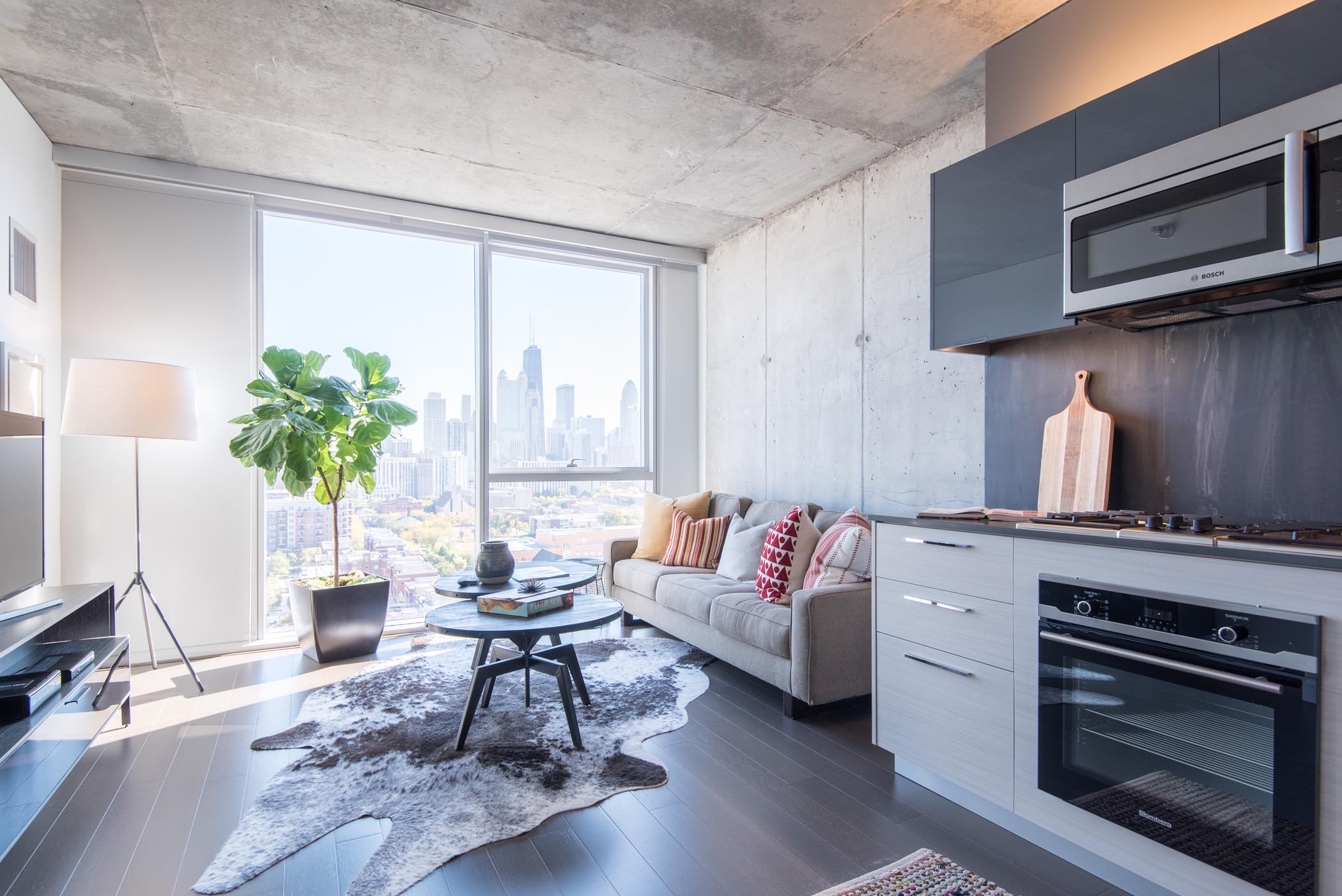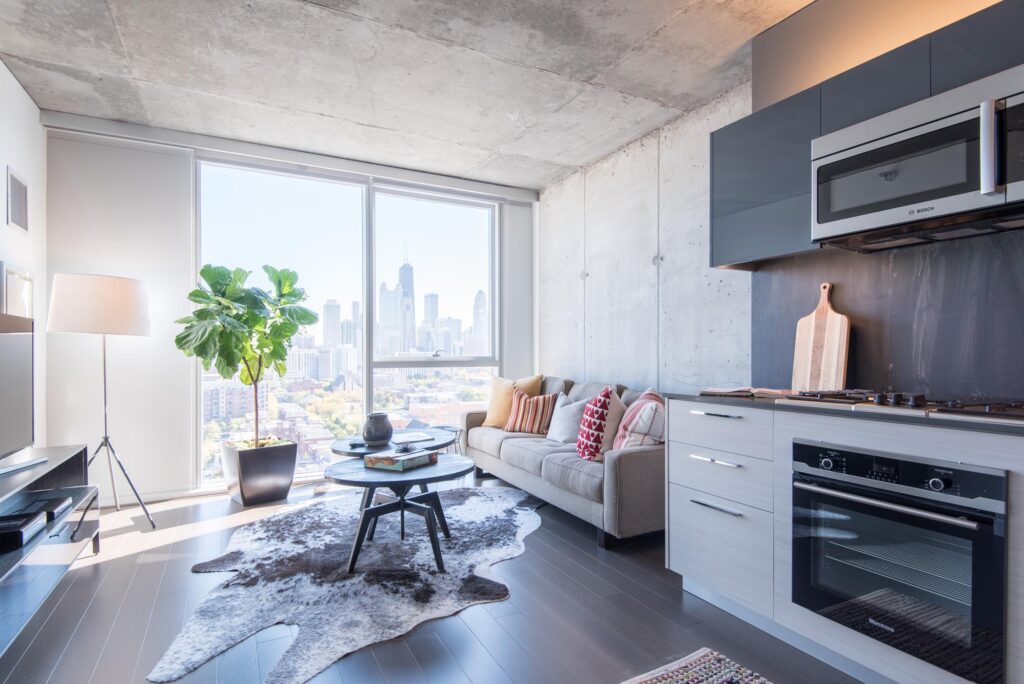Current State of the Downtown Chicago Apartment Market: Fall 2016

In early November, Appraisal Research Counselors released their quarterly market report for Class A downtown Chicago apartment rentals. For the first time in many years, the report was not all roses. The data showed an occupancy rate decrease, from 94.8% in the second quarter to 92.2% in the third quarter, and rents holding steady, but not increasing at the rate of past years. This report has many in the industry wondering what’s in store for the downtown Chicago apartment market.
In reviewing this report, there are three key factors to consider – supply, pricing and jobs.
-
Supply
From 2013 – 2015, downtown Chicago has added approximately 7,000 new luxury apartments. For the most part, these apartments have been rented at rates higher than any other rental properties in the area. Rents have been able to increase because supply and demand have remained in line. In addition, older buildings (built pre-2013) have invested in upgrading with new finishes, amenities and services to attract renters. These buildings have increased occupancy and rents as well.
2016 is the fist year we have seen supply outpace demand. Nearly 4,000 units delivered this year. Combine this new inventory with the large number of units remaining from lease-ups in 2015, and an average 50% non-renewal rate at established downtown Chicago buildings, and the result is more apartments available this year than ever before. While ARC’s reported drop in occupancy does not include occupancy in the newest lease-up buildings, this specific supply is playing a major role in filling new apartments with renters.
-
Pricing
We are currently seeing three types of pricing strategies in the market:
Upfront Concessions: This is the way most lease-up buildings are currently marketing their apartments. Most properties are offering one to three months free rent, given as a credit in the beginning months of a lease.
Flat Rate Pricing: While not as common as upfront concessions, this strategy takes a set number of units and applies a significant discount to drive marketing. Oftentimes, this is done on short-term leases to bring units back to the prime leasing season.
Revenue Management/LRO: This is the way most established downtown Chicago apartment buildings set pricing. Using a computer algorithm based on individual unit features such as view, closet space, etc., combined with current supply in the market, traffic and vacancy rate for the building. Apartment owners depend on this pricing model to maximize revenue.
-
Jobs
For the past few years we have heard about the thousands of jobs coming to downtown Chicago. This includes new companies such as ConAgra moving their headquarters from out of state. It also includes headquarter relocations from the suburbs like McDonalds, Motorola and Kraft Heinz. Young talent is the reason companies are moving their headquarters to downtown Chicago. This talent is primarily who developers are relying on to rent all the new apartments. Chicago’s job market will play a huge role in absorbing the large supply coming over the next three years.
Insights & Predictions
-
Supply
The majority of apartments delivered since 2013 have been rented. Of those that have seen turnovers, the average is about 50% often times due to a major life milestone. Most are staying in their new apartment for an average of two years before moving on. Reasons for a change most often include getting engaged/married, being relocated for or purchasing a condo or house.
An interesting trend we have seen over the past year has been over 40% of LLCR clients already live in downtown Chicago. Most of these clients are moving from one new building to another. Another 40% of our renters are relocating here from out of state. Very few are moving from the surrounding Chicago neighborhoods to downtown, in large part because pricing has increased and there are now luxury neighborhood developments never before available to neighborhood renters. Moreover, some of the downtown renters are now moving to the newer neighborhood luxury rentals because they can save a little bit of money and still get the quality they are used to downtown. In past cycles, these have all been condo buyer but are now renters by choice.
With the influx of supply coming to downtown, coupled with supply in the neighborhoods, it will take two audiences to fill in the gaps: relocation renters coming to Chicago for new jobs and baby-boomers selling homes in the suburbs and moving to larger units downtown. Neither of these are occurring in huge quantities yet and will need to increase in order to fill this level of supply.
-
Pricing
Upfront Concessions: This is most common in lease-up buildings that have the most incentive to lease units quickly. With the increased supply coming, coupled with seasonality, we are seeing brand new buildings in lease up, like NEXT in River North, MILA in The Loop and Moment in Streeterville, offering upwards of two months free rent on 15-18 month leases. This is a tried and true strategy and has worked in the past to drive rentals and occupancy during slower periods like late fall and early winter.
What is Supposed to Happen: Developers/property management companies are able to drive increased traffic at slower times of year. The renter gets a deal upfront, usually, the second and third month of rent free, and is able to live in a brand-new building at a fair price.
What is Actually Happening: The number of renters looking for apartments in the fourth quarter is down from past years, resulting in less occupancy even with these new lease-up buildings. Smaller unit types such as studios and convertibles are renting, but most one and two bedroom units are not being absorbed because pricing is still too high, even with the incentives.
Luxury Living Chicago tracks rental data closely, and while we have seen concessions remain in place and even increase throughout the year, market rents have also climbed higher. While the concessions are helpful to renters, raising market rents will make it harder for renters to qualify for the apartments as financial qualifying standards are often based on market rents and not net rents.
What Do We Expect to Happen in 2017: Many of these lease-up buildings (both delivered and coming in the first half of 2017), would like to pull back on concessions as soon as possible. My take is concessions being offered now will remain for the first few months of the year, pull back in the second quarter and then come back in full force as soon as July 2017, when even more inventory is set to hit the market. From that point forward, through the end of 2018, expect heavy concessions and a true battle to attract the downtown Chicago renter.
Flat Rate: If I had my pick, I would choose to offer flat rate pricing over concessions. It’s less confusing to the renter and curbs any stigma associated with renewal when renters fear a huge increase in rents in the second year of a lease after the concessions are over. The challenge for developers and multifamily owners is flat rate lowers the overall value of the unit. Flat rate pricing is not typically captured in market surveys, so it’s hard to tell the real impact it is having on the Chicago apartment market.
Revenue Management: While revenue management systems are great for stabilized properties, it’s important to note it cannot catch up with the speed of lease-ups that affect the market. Units are sitting vacant longer if no one is at the wheel. This system also cannot react to flat rate pricing fast enough.
-
Jobs
While there has been tremendous buzz about all of the new jobs coming to downtown Chicago, there has yet to be the huge influx of renters. Companies like Yelp, Google, Motorola, and Kraft Heinz have brought some of their employees to these new headquarters but most already live downtown. When they start truly relocating people or making significant hires, is when we are going to see jobs play a major role finding downtown Chicago luxury renters. The jobs that have been added have helped tremendously with the current supply but more are needed to quickly fill the amount of apartments coming online.The good news is we have not seen the real droves of new relocations yet and we expect this to increase over the next 12-24 months.
It’s going to be slow in the Chicago apartment market until January. However, it will pick up for a few short months in early 2017. The market can also expect increased concessions across the board for the next two years.
Follow the link below to download our 2015 data or sign up now to receive our complete 2016 Multifamily Data Report by texting DATA to 66866.

Search The Blog
Follow Us on Social
Apartment Experts
NEIGHBORHOODS
View AllUp Next

Breakfast, Lunch & Dinner in Logan Square
Chicago’s Logan Square neighborhood is thriving, partially thanks to the wide variety of restaurants and bars that continue to open. Logan Square is increasingly […]

Behind the Scenes of Luxury Living Chicago: What We’re Thankful for This Year
Welcome to our new blog series “Behind the Scenes of Luxury Living Chicago.” Through these posts, we will offer an inside look at our […]

Broker Round Table: Moment
The Broker Round Table Series focuses on a different luxury apartment property. Luxury Living Chicago Realty’s proficient team of brokers has 85 years of combined […]

Things to Do in Chicago This Holiday Season
As the city gears up for Thanksgiving, the holiday season is officially here. The city is bustling with shoppers stocking up on gifts and […]









